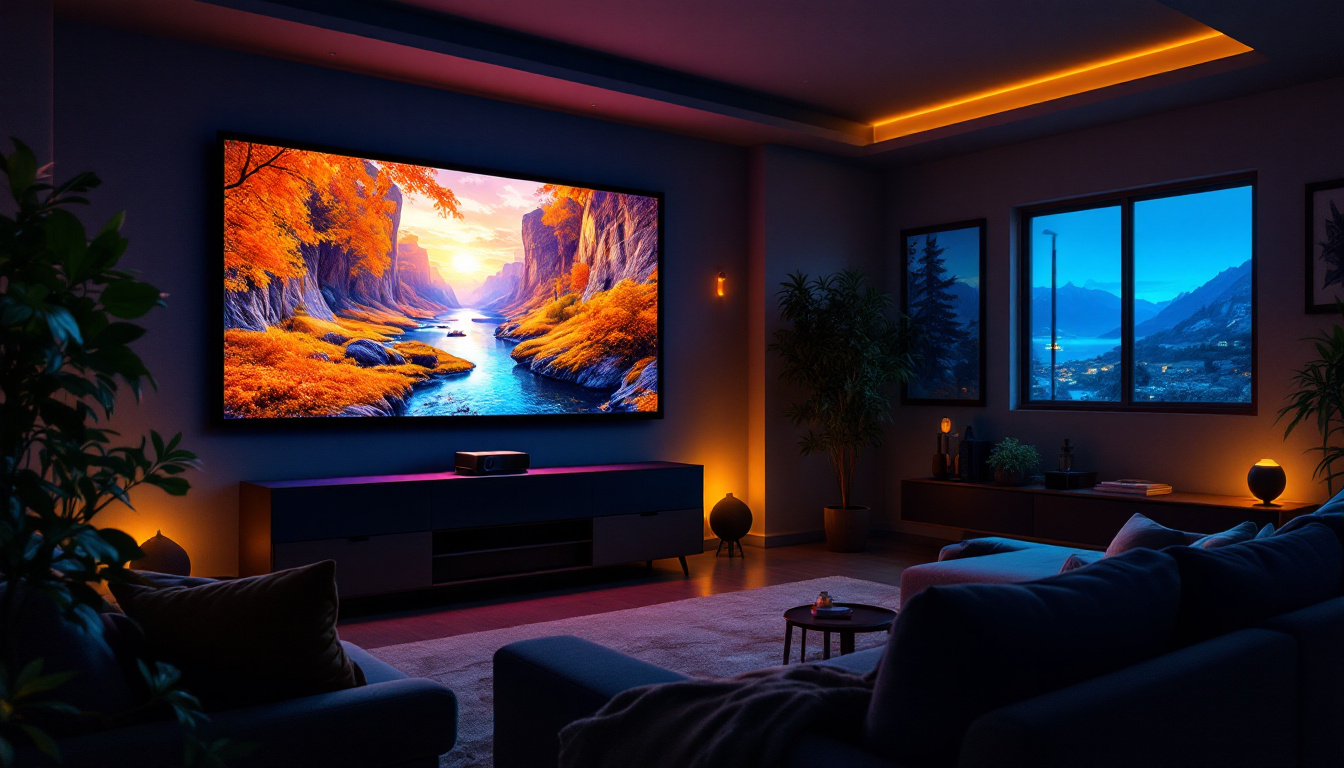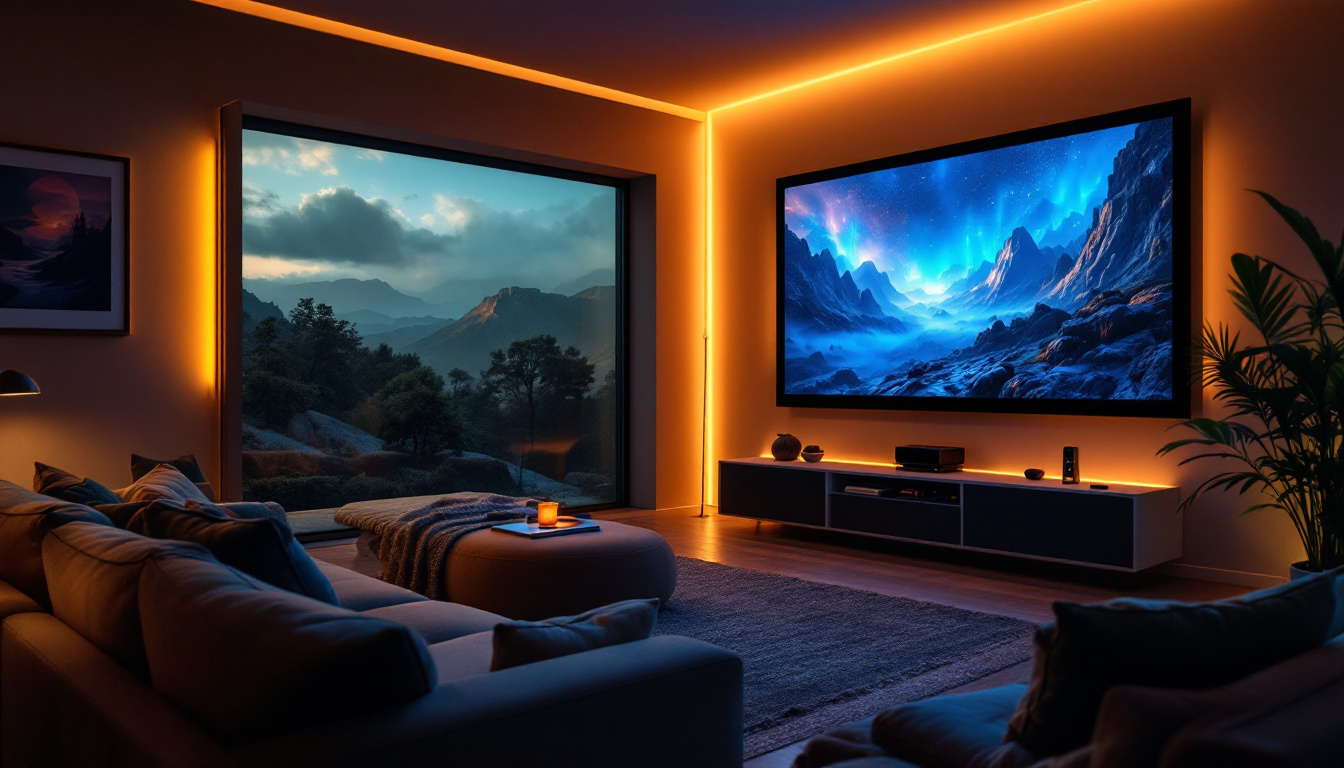In the world of modern technology, displays have become an integral part of our daily lives. From smartphones to large televisions, the type of display used can significantly affect the viewing experience. Among the most popular types are LCD (Liquid Crystal Display) and LED (Light Emitting Diode) displays. While often mentioned together, they have distinct characteristics that set them apart. This article delves into the intricacies of each technology, exploring their functionalities, advantages, and applications.
Understanding LCD Displays
LCD technology has been around since the 1970s and has evolved significantly over the decades. It utilizes liquid crystals sandwiched between two layers of glass or plastic. When an electric current passes through the liquid crystals, they align in such a way that they either block or allow light to pass through, creating images on the screen.
How LCD Works
The fundamental principle behind LCD technology is the manipulation of light. Unlike traditional displays that emit light, LCDs rely on a backlight, typically made from fluorescent tubes or LEDs, to illuminate the screen. The liquid crystals themselves do not emit light; they merely modulate it. This means that the quality of the backlight plays a crucial role in the overall display quality. Additionally, advancements in backlight technology, such as the introduction of edge-lit and full-array local dimming, have significantly improved the brightness and contrast of LCD displays, allowing for a more vibrant viewing experience.
Types of LCD Displays
There are several types of LCD displays, each with unique characteristics:
- Twisted Nematic (TN): Known for their fast response times, TN panels are commonly used in gaming monitors. However, they often suffer from poor color reproduction and limited viewing angles.
- In-Plane Switching (IPS): IPS panels offer better color accuracy and wider viewing angles compared to TN panels. They are ideal for graphic design and professional applications but may have slower response times.
- Vertical Alignment (VA): VA panels provide excellent contrast ratios and deeper blacks, making them suitable for watching movies. However, they can have slower response times than TN and IPS panels.
Advantages of LCD Displays
LCD displays come with several advantages that make them a popular choice for various applications:
- Energy Efficiency: LCDs consume less power compared to older display technologies, making them more environmentally friendly.
- Thin and Lightweight: The design of LCD displays allows for thin and lightweight screens, making them ideal for portable devices.
- Cost-Effective: LCD technology is generally more affordable than other display technologies, making it accessible for a wide range of consumers.
Moreover, LCD displays are known for their longevity and durability. Unlike older CRT monitors, which could suffer from screen burn-in or degradation over time, LCDs maintain their image quality for a longer period. This reliability makes them a preferred option for both home and professional use. Additionally, the versatility of LCD technology means it can be found in a multitude of devices, from smartphones and tablets to televisions and computer monitors, catering to a diverse array of consumer needs.
As technology continues to advance, innovations such as high dynamic range (HDR) and 4K resolution have further enhanced the capabilities of LCD displays. These advancements allow for a broader color gamut and improved brightness levels, resulting in stunning visuals that are more lifelike than ever before. The integration of smart technology into LCD screens has also transformed how users interact with their devices, enabling features such as touch sensitivity and voice control, which enhance the overall user experience.
Exploring LED Displays
LED displays are often confused with LCDs, but they represent a different technology. An LED display is essentially an LCD that uses LEDs for backlighting instead of traditional fluorescent lights. This distinction is crucial as it leads to various advantages in terms of performance and quality. The evolution from traditional LCDs to LED displays has transformed the way we experience visual media, making it more immersive and engaging than ever before.
How LED Displays Work
LED displays utilize the same liquid crystal technology as traditional LCDs, but they enhance the backlighting system. By employing LEDs, these displays can achieve greater brightness and contrast ratios. There are two main types of LED backlighting: edge-lit and full-array. Each type has its unique characteristics that cater to different viewing needs and preferences, making it essential for consumers to understand these differences when selecting a display.
- Edge-Lit LED: In edge-lit displays, LEDs are placed along the edges of the screen. This design allows for thinner displays but may result in uneven lighting. While edge-lit displays are often more affordable and lightweight, they may not provide the same level of contrast and uniformity as their full-array counterparts.
- Full-Array LED: Full-array backlighting involves placing LEDs directly behind the screen. This setup allows for more uniform lighting and better control over local dimming, enhancing contrast. Full-array displays are particularly favored in high-end televisions and monitors, where picture quality is paramount.
Advantages of LED Displays
LED displays offer several benefits over traditional LCDs:
- Improved Brightness: LED technology allows for brighter screens, making them suitable for well-lit environments. This feature is especially advantageous for outdoor signage and commercial displays, where visibility is crucial.
- Better Color Accuracy: With enhanced color reproduction, LED displays provide more vibrant and true-to-life images. This improved color accuracy is vital for professionals in graphic design and photography, where precise color representation can significantly impact the final product.
- Longer Lifespan: LEDs have a longer operational life compared to traditional backlighting, leading to reduced maintenance and replacement costs. This longevity not only benefits consumers but also contributes to environmental sustainability by reducing electronic waste.
In addition to these advantages, LED displays are also known for their energy efficiency. Compared to older technologies, they consume less power, which is not only cost-effective but also aligns with the growing demand for eco-friendly solutions. Furthermore, advancements in LED technology have led to the development of OLED (Organic Light Emitting Diode) displays, which offer even greater contrast and color depth by allowing each pixel to emit its own light. This innovation is paving the way for the next generation of display technology, promising even more stunning visual experiences.
Moreover, the versatility of LED displays extends beyond televisions and computer monitors. They are widely used in various applications, including digital signage, billboards, and even in automotive displays. The ability to create large, eye-catching visuals makes LED technology a popular choice for advertisers looking to capture consumer attention. As the technology continues to evolve, we can expect to see even more innovative uses of LED displays in everyday life, enhancing our interaction with digital content in ways we have yet to imagine.
Comparing LCD and LED Displays
While LED displays are technically a subset of LCD technology, the differences in backlighting lead to significant variations in performance and application. Understanding these differences can help consumers make informed decisions based on their specific needs.
Image Quality
When it comes to image quality, LED displays generally outperform traditional LCDs. The enhanced backlighting allows for better contrast ratios and more vibrant colors. This is particularly noticeable in darker scenes, where LED displays can produce deeper blacks and more detail.
Power Consumption
Both LCD and LED displays are energy-efficient compared to older technologies like CRT (Cathode Ray Tube). However, LED displays tend to consume less power, especially when displaying darker images. This efficiency can lead to lower electricity bills and a reduced carbon footprint.
Cost Considerations
In terms of cost, traditional LCDs are typically more affordable than LED displays. However, the price gap has been narrowing as LED technology becomes more mainstream. Consumers should weigh the initial investment against the long-term benefits, such as energy savings and improved performance.
Applications of LCD and LED Displays
Both LCD and LED displays find applications across various sectors, from consumer electronics to professional environments. Understanding the specific use cases can help in selecting the right display technology.
Consumer Electronics
In the realm of consumer electronics, LCD and LED displays are ubiquitous. From smartphones and tablets to televisions and monitors, these technologies provide the visual experience that users have come to expect. LED displays, in particular, are favored for larger screens due to their superior brightness and color accuracy.
Professional Use
In professional settings, such as graphic design, photography, and video editing, the choice of display technology can significantly impact workflow and output quality. IPS LCDs are often preferred for their color accuracy, while LED displays are increasingly used for their vibrant visuals and enhanced viewing experiences.
Advertising and Signage
Digital signage has become a powerful marketing tool, and both LCD and LED displays play crucial roles in this space. LED displays are commonly used for outdoor advertising due to their high brightness and visibility in direct sunlight. In contrast, LCD displays are often found in indoor settings, providing clear visuals for retail and informational purposes.
Future of Display Technology
The display technology landscape is constantly evolving, with innovations that promise to enhance the user experience further. Emerging technologies such as OLED (Organic Light Emitting Diode) and MicroLED are gaining traction, offering improved performance over traditional LCD and LED displays.
OLED Technology
OLED displays offer several advantages, including true blacks, wider viewing angles, and faster response times. Unlike LCDs, OLED panels emit their light, eliminating the need for backlighting. This technology is particularly popular in high-end televisions and smartphones, where image quality is paramount.
MicroLED Technology
MicroLED is another promising technology that combines the best aspects of both LCD and OLED. It features tiny, self-emissive LEDs that provide excellent contrast and color accuracy. MicroLED displays are modular, allowing for customizable sizes and shapes, making them ideal for a variety of applications.
Integration with Smart Technology
As smart technology continues to permeate everyday life, display technologies are also adapting. Future displays may incorporate features such as touch sensitivity, augmented reality capabilities, and integration with smart home systems. This evolution will further enhance the user experience and open new avenues for interaction.
Conclusion
In summary, both LCD and LED displays have their unique advantages and applications. While LED displays generally offer superior performance in terms of brightness and color accuracy, traditional LCDs still hold value in various contexts. Understanding the differences between these technologies can empower consumers and professionals alike to make informed choices that align with their specific needs.
As technology continues to advance, the future of display technology looks promising, with innovations that will likely redefine how we interact with screens. Whether for personal use or professional applications, the right display technology can enhance the viewing experience and contribute to greater productivity.
Discover Cutting-Edge LED Display Solutions
As you consider the advancements and applications of LCD and LED display technologies, LumenMatrix stands at the forefront of innovation, offering a wide array of LED display modules designed to elevate your visual experience. Whether you’re looking to enhance brand visibility with an Indoor LED Wall Display, captivate passersby with an Outdoor LED Wall Display, or create dynamic visual communications with our Custom LED Display options, LumenMatrix has the solution. Embrace the future of display technology and check out LumenMatrix LED Display Solutions to see how we can help you share your message with impact and clarity.































